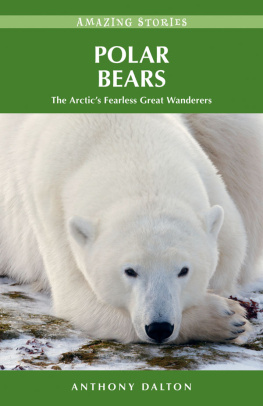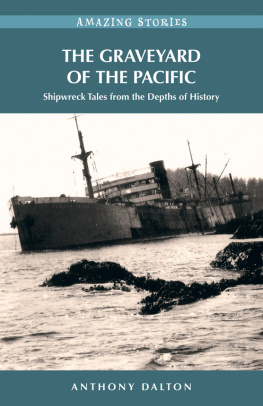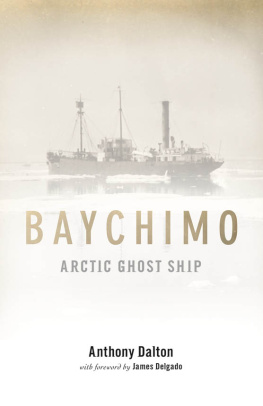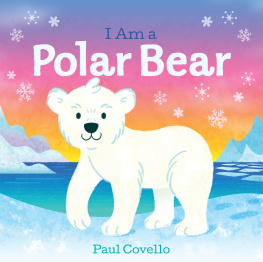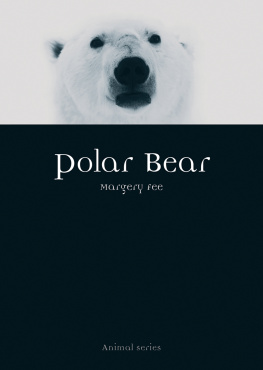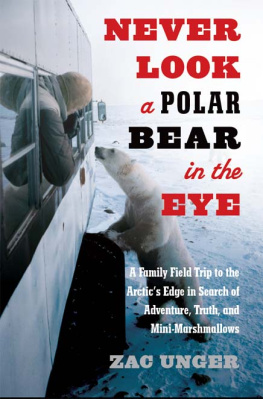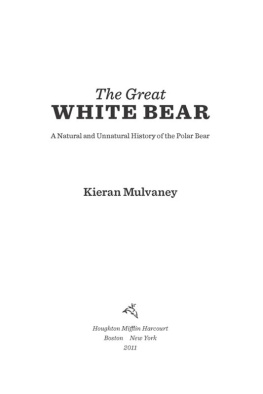About the Author
Anthony Dalton is the author of nine non-fiction books and co-author of two more, many of which are about the sea or about ships and boats. These include The Graveyard of the Pacific , A Long, Dangerous Coastline, Baychimo : Arctic Ghost Ship and Alone Against the Arctic , all published by Heritage House. Anthony teaches workshops across Canada and divides his time between homes on the mainland and in the Gulf Islands of British Columbia.
Acknowledgements
My initial thanks must go to Mark Ingebrigtsen, Mike Macri and Steve Millerall from Churchill, Manitoba. To assist my search for polar bears some years ago, Mark loaned me his truck to follow the roads around Churchill; Mike took me out in his jet boat, Sea North II , and later in an inflatable speedboat. We watched beluga whales, seals and caribou, and we talked for hours. Steve Miller flew me far and wide over tundra and sea in his helicopter, skimming over drifting ice and barren coastal lands. Your time and your efforts are much appreciated. Equally, far away on the west coast of Alaska, in the remote village of Kivalina, my friends Chester Bundy and Sylvester Swan told me about the Arctic bears and their habits.
My family, most notably Penny and Pam, have always been supportive of my literary projects. They have my love and my thanks. Among my friends, Steve Crowhurst has always shown great enthusiasm for my books, as have Graeme Halley, Bill MacNeil, Bernice Lever, and more recently, Bill Hay.
Without the generosity and expertise of the staff of Heritage House, many of my books would not have been published. I am especially indebted to Rodger Touchie and Vivian Sinclair for their continued support, and to my ever-patient editor for this series, Lesley Reynolds. It is my pleasure to work with you.
Selected Bibliography
Couture, Pauline. Ice: Beauty, Danger, History . Toronto: McArthur & Co., 2004.
Cowper, David Scott. Northwest Passage Solo . London: Seafarer Books, 1993.
Dalton, Anthony. Baychimo: Arctic Ghost Ship . Surrey: Heritage House, 2006.
_____. Arctic Naturalist: The Life of J. Dewey Soper . Toronto: Dundurn Group, 2010.
Ellis, Richard. On Thin Ice: The Changing World of the Polar Bear . New York: Knopf, 2009.
Freuchen, Peter. Vagrant Viking: My Life and Adventures . London: Victor Gollancz, 1954.
Frison-Roche, Roger. Hunters of the Arctic . Toronto: Ryerson Press, 1969.
Horwood, Harold. Bartlett: The Great Canadian Explorer . Garden City, NY: Doubleday Co., 1977.
Jones, Tristan. Ice! Kansas City: Sheed, Andrews and McMeel, 1978.
Madsen, Marius. Shipwreck and Struggle . Toronto: Pitt Publishing, 1953.
McClure, Robert Le Mesurier. The Discovery of the North-West Passage . Edmonton: Hurtig, 1969.
Nansen, Fridjtof. Farthest North . London: Harper, 1898. Reprint, New York: Random House, 1999.
Norris, Stefan, Lynn Rosenstrater and Pl Martin Eid. Polar Bears at Risk . Gland, Switzerland: WWF-World Wide Fund for Nature, 2002.
Poulsen, Else. Smiling Bears . Vancouver: Greystone Books, 2009.
Pryde, Duncan. Nunaga: Ten Years of Eskimo Life . New York: Walker & Co., 1971.
Simon, Alvah. North to the Night . Camden, ME: International Marine Publishing, 1998.
Stefansson, Vilhjalmur. My Life with the Eskimo . New York: Macmillan, 1913.
Tyson, Captain George E. Arctic Experiences . New York: Cooper Square Press, 2002.
Vaeth, J. Gordon. To the Ends of the Earth . New York: Harper & Row, 1962.
Wood, Daniel. Bears . Vancouver: Whitecap Books, 1995.
Contents
Copyright 2010 Anthony Dalton
All rights reserved. No part of this publication may be reproduced, stored in a retrieval system or transmitted in any form or by any meanselectronic, mechanical, audio recording or otherwisewithout the written permission of the publisher or a photocopying licence from Access Copyright, Toronto, Canada.
Originally published by Heritage House Publishing Co. Ltd. in 2010 in paperback with ISBN 978-1-926613-74-1 .
This electronic edition was released in 2011.
e-pub ISBN: 978-1-926936-25-3
e-PDF ISBN: 978-1-926936-47-5
Cataloguing data available from Library and Archives Canada
Edited by Lesley Reynolds
Cover photo of polar bear at Churchill, Manitoba, by Hunted Duck/iStockphoto
Heritage House acknowledges the financial support for its publishing program from the Government of Canada through the Canada Book Fund (CBF), Canada Council for the Arts and the province of British Columbia through the British Columbia Arts Council and the Book Publishing Tax Credit.

www.heritagehouse.ca

For Mike Warburton:
a fine researcher and a good friend
Authors Note
To ensure consistency with historical accounts and to avoid confusion, I have used imperial measurements throughout this book.
EPILOGUE
The Inevitable Fate of Polar Bears?
As the world continues to warm up, the two polar ice packs melt and recede farther each summer. The ice-free months last a few days or a few weeks longer each year. Although there are two poles, only the Arctic ice cap directly affects polar bears. There, where once bears could roam and hunt for food on drifting ice all summer, the seas are more and more open. The ice becomes less and less. The bears have to work harder, travel farther and fast for longer between meals.
Eventually, if the north polar sea ice continues to melt at the same rate, the polar bears will have nowhere to go but the Arctic islands and the great land masses of the North. They will almost certainly move south as well. Wherever they travel, they will inevitably encounter and provoke mankind into acts of violence. If natures dwindling resource of ice does not directly cause the polar bears extinction, mankind will eventually eradicate the bear populations for its own perceived safetyand the world will be so much poorer for the loss of yet one more valuable and eminently fascinating species.
In the summer of 2008, ScienceDaily, a popular and well-written Internet website, reported that scientists had recently conducted an aerial search of the Chukchi Sea off the coast of northwest Alaska and were concerned to discover a total of nine polar bears swimming far from land in open water. One was a full 60 miles from shore. With no ice nearby from which to hunt or on which to rest, that bear was in serious danger of exhausting itself and drowning, as were all the others too far from land or ice.
Discussing the lack of ice off Alaskas Arctic shores, Professor Richard Steiner of the University of Alaskas Marine Advisory Program was reported to have said, The bottom line here is that polar bears need sea ice, sea ice is decaying, and the bears are in very serious trouble. For any people who are still non-believers in global warming and the impacts it is having in the Arctic, this should answer their doubts once and for all.
Introduction
There are eight major species of bears in the world, and with one exception, they live in the northern hemisphere. At the top of the list is the magnificent polar bear, one of the largest bear species in the world and the largest terrestrial carnivore. The polar bear is known by a variety of popular names: nanook, nanuq, nanuk, ice bear, sea bear, eisbr, isbjrn, Arctic bear and white bear, and to scientists as Ursus maritimus (formerly Thalarctos maritimus ). The great yellowish white bears roam the Arctic ice in pursuit of seals and the tundra in search of anything else edible. They also occasionally stray far to the south, way below the Arctic Circle, where and when conditions permit.

